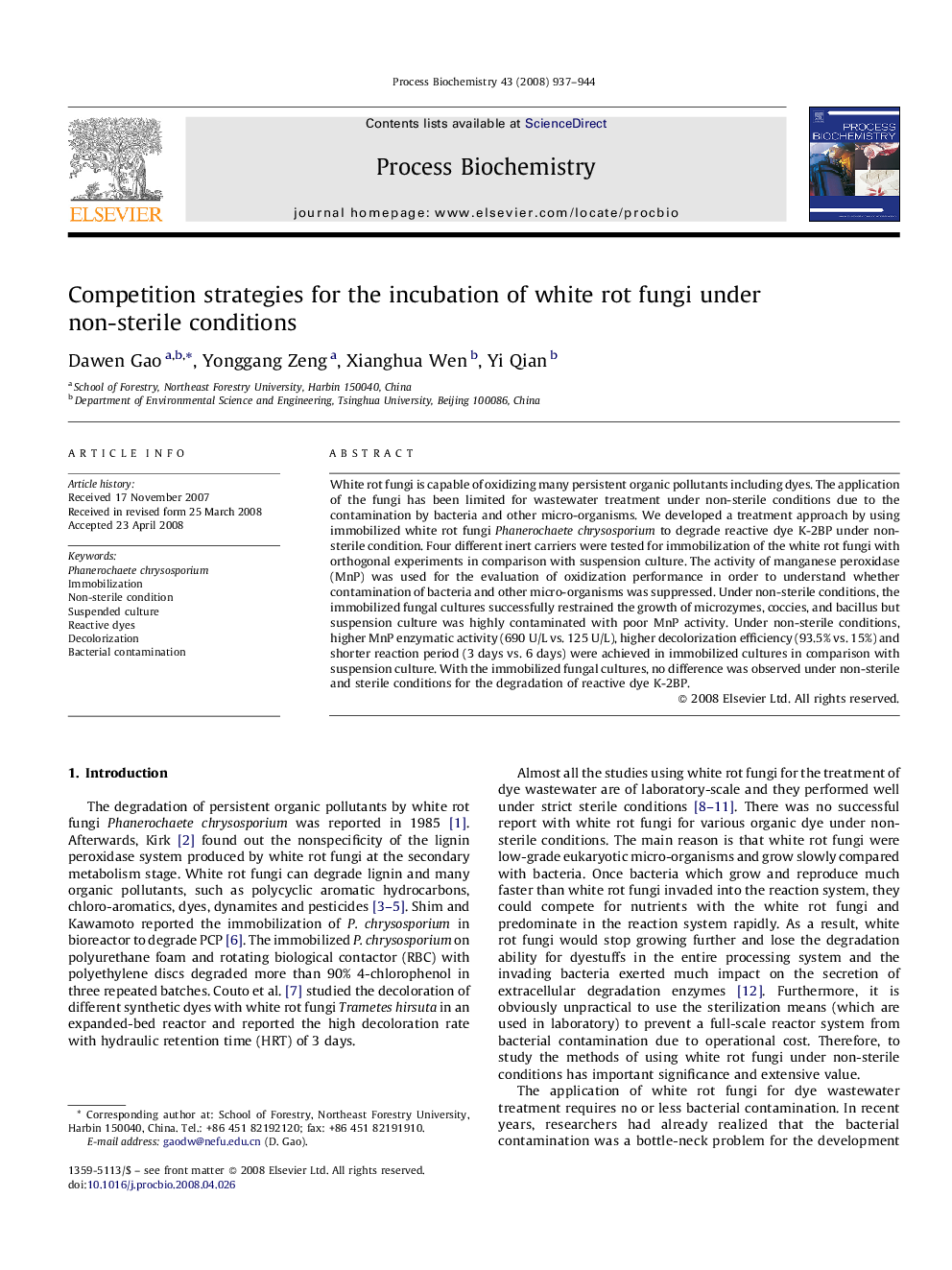| Article ID | Journal | Published Year | Pages | File Type |
|---|---|---|---|---|
| 35419 | Process Biochemistry | 2008 | 8 Pages |
White rot fungi is capable of oxidizing many persistent organic pollutants including dyes. The application of the fungi has been limited for wastewater treatment under non-sterile conditions due to the contamination by bacteria and other micro-organisms. We developed a treatment approach by using immobilized white rot fungi Phanerochaete chrysosporium to degrade reactive dye K-2BP under non-sterile condition. Four different inert carriers were tested for immobilization of the white rot fungi with orthogonal experiments in comparison with suspension culture. The activity of manganese peroxidase (MnP) was used for the evaluation of oxidization performance in order to understand whether contamination of bacteria and other micro-organisms was suppressed. Under non-sterile conditions, the immobilized fungal cultures successfully restrained the growth of microzymes, coccies, and bacillus but suspension culture was highly contaminated with poor MnP activity. Under non-sterile conditions, higher MnP enzymatic activity (690 U/L vs. 125 U/L), higher decolorization efficiency (93.5% vs. 15%) and shorter reaction period (3 days vs. 6 days) were achieved in immobilized cultures in comparison with suspension culture. With the immobilized fungal cultures, no difference was observed under non-sterile and sterile conditions for the degradation of reactive dye K-2BP.
